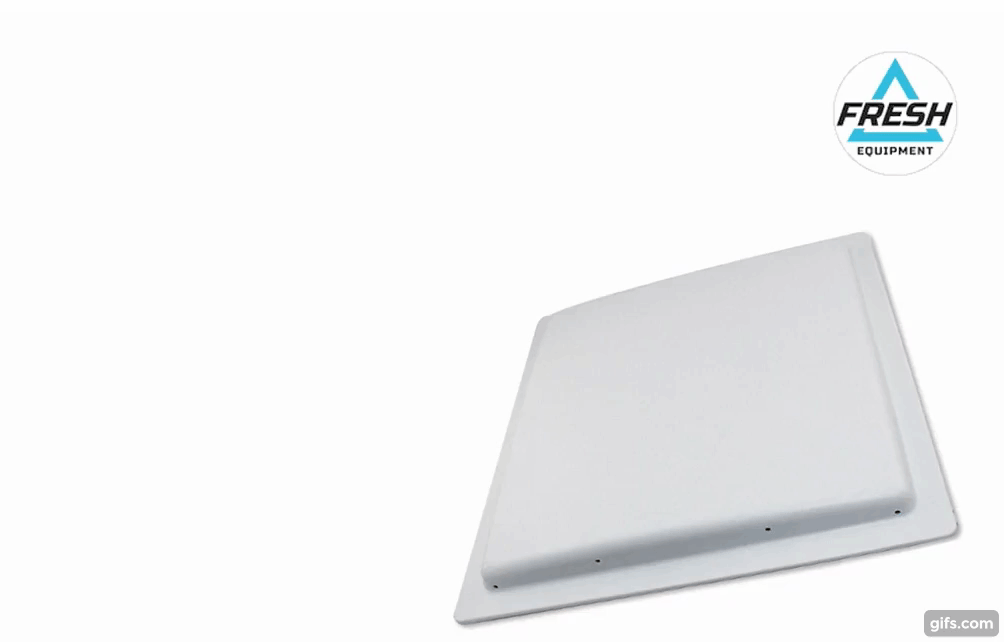Asset tracking based on RFID UHF is a system that uses ultra-high frequency (UHF) radio waves to monitor and manage the location, status, and movement of assets. This technology involves attaching RFID tags to assets, which are then read by RFID readers equipped with UHF antennas. The readers capture and transmit the unique identification information from the tags to a central software system, allowing for real-time tracking, inventory management, and enhanced security of assets across various industries.
Introduction to RFID UHF Technology
Overview of RFID UHF Technology
RFID UHF (Ultra-High Frequency) technology has revolutionized the way businesses track and manage their assets. Unlike traditional tracking methods, RFID offers unparalleled accuracy, efficiency, and flexibility. This technology enables businesses to monitor their assets in real-time, reducing the risk of loss and improving operational efficiency.


Importance of Asset Tracking
Effective asset tracking is essential for businesses to maintain control over their inventory, equipment, and other valuable assets. It helps prevent loss, reduces downtime, and ensures that assets are used optimally. With the advent of RFID UHF technology, businesses can achieve a higher level of asset visibility and management.
What is RFID UHF Technology?
Definition and Basics
RFID (Radio Frequency Identification) UHF technology uses radio waves to communicate between a tag attached to an asset and a reader device. UHF operates in the frequency range of 860 MHz to 960 MHz, making it suitable for a wide range of applications.
How RFID Works

RFID systems consist of three main components: tags, readers, and antennas. The tags, which are attached to assets, contain unique identification information. Readers use antennas to send and receive radio waves, which power the tags and retrieve the stored data. This information is then processed by software to provide real-time asset tracking and management.
The Evolution of Asset Tracking
Historical Context
Asset tracking has come a long way from manual record-keeping and barcode systems. Initially, businesses relied on paper-based methods to monitor their assets, which were prone to errors and inefficiencies. The introduction of barcode technology in the 1970s marked a significant improvement, but it wasn’t until the development of RFID technology that asset tracking truly transformed.
Modern Developments
Today, RFID technology represents the cutting edge of asset tracking. It offers several advantages over traditional methods, including longer read ranges, faster data transfer rates, and the ability to track multiple items simultaneously. These advancements have made RFID an indispensable tool for businesses in various industries.
Components of an RFID Asset Tracking System

RFID Tags
RFID tags are small devices that store unique identification information about an asset. They come in various forms, including passive, active, and semi-passive tags. Passive tags are powered by the reader’s radio waves, while active and semi-passive tags have their own power sources, allowing for longer read ranges and additional functionalities.
RFID Readers
RFID readers are devices that communicate with RFID tags to retrieve their stored information. Readers can be fixed or handheld, depending on the application. Fixed readers are typically used in stationary environments, such as warehouses, while handheld readers are used for mobile applications.

Antennas
Antennas are critical components of an RFID system, as they enable the communication between tags and readers. They come in various shapes and sizes, depending on the read range and coverage area required.
Software Solutions
Software solutions are essential for processing the data collected by RFID readers. They provide the tools needed to manage and analyze asset information, generate reports, and integrate with other business systems.
Benefits of RFID in Asset Tracking

Improved Accuracy
One of the primary benefits of RFID technology is its ability to provide highly accurate asset tracking. Unlike barcode systems, which require line-of-sight scanning, RFID can read multiple tags simultaneously, even in challenging environments.
Real-Time Data Access
RFID UHF systems offer real-time data access, allowing businesses to monitor their assets continuously. This capability is particularly valuable in industries where asset location and status are critical, such as manufacturing and logistics.
Enhanced Security
RFID UHF technology enhances asset security by providing detailed information about asset movement and usage. This helps businesses prevent unauthorized access and reduce the risk of theft or loss.
Applications of RFID Technology
 Manufacturing
Manufacturing
In manufacturing, RFID technology is used to track raw materials, work-in-progress items, and finished goods. This improves inventory management, reduces production delays, and enhances overall efficiency.
Healthcare
The healthcare industry relies on RFID technology to track medical equipment, supplies, and patient information. This ensures that critical assets are always available when needed and helps improve patient care.
Retail
Retail businesses use RFID technology to manage inventory, reduce shrinkage, and enhance the shopping experience. By providing real-time visibility into stock levels, RFID helps retailers optimize their supply chains and improve customer satisfaction.
Logistics and Supply Chain
In logistics and supply chain management, RFID technology is used to track shipments, manage warehouse inventory, and streamline distribution processes. This reduces errors, lowers costs, and enhances overall operational efficiency.
Implementing RFID Asset Tracking

Assessing Business Needs
Before implementing an RFID asset tracking system, businesses must assess their specific needs and requirements. This involves identifying the assets to be tracked, determining the desired level of visibility, and evaluating the potential return on investment.
Selecting the Right Hardware and Software
Choosing the right hardware and software is critical for the success of an RFID asset tracking system. Businesses should consider factors such as read range, tag durability, and integration capabilities when selecting their equipment.
Deployment Strategies
Successful deployment of an RFID asset tracking system requires careful planning and execution. This includes conducting a site survey, installing the necessary hardware, configuring the software, and training employees on the new system.
Challenges and Solutions in RFID Asset Tracking
Signal Interference
Signal interference can be a significant challenge in RFID systems, particularly in environments with a high density of metal or other reflective materials. To mitigate this issue, businesses can use specialized antennas and shielding techniques.
Cost Considerations
While RFID technology offers numerous benefits, the initial investment can be substantial. Businesses should conduct a cost-benefit analysis to ensure that the potential savings and efficiencies outweigh the implementation costs.
Data Privacy Concerns
Data privacy is a critical consideration in any asset tracking system. Businesses must implement robust security measures to protect sensitive information and comply with relevant regulations.
Case Studies
Success Stories from Various Industries
Several businesses have successfully implemented RFID asset tracking systems, resulting in significant improvements in efficiency and productivity. For example, a manufacturing company reduced production delays by 30% after deploying an RFID UHF system to track raw materials and work-in-progress items. Similarly, a healthcare facility improved patient care by ensuring that critical medical equipment was always available when needed.
Future Trends in RFID UHF Technology
Emerging Innovations
The field of RFID UHF technology is continually evolving, with new innovations emerging regularly. These advancements include improved tag designs, enhanced read ranges, and more sophisticated software solutions.
Predictions for the Future
Looking ahead, the future of RFID technology appears promising. As the technology continues to mature, we can expect even greater levels of accuracy, efficiency, and integration with other business systems.
Comparing RFID UHF with Other Tracking Technologies
RFID LF (Low Frequency) and HF (High Frequency)
While RFID UHF is known for its long read ranges and fast data transfer rates, RFID LF and HF technologies offer advantages in specific applications. RFID LF is often used in animal tracking and access control, while RFID HF is commonly used in library systems and contactless payments.
Barcode Systems
Barcode systems are a cost-effective solution for asset tracking, but they have limitations in terms of read range and data capacity. RFID UHF technology provides a more advanced alternative, offering greater accuracy and efficiency.
GPS Tracking
GPS tracking is ideal for monitoring assets in transit, such as vehicles and shipments. However, it lacks the precision and versatility of RFID UHF technology for indoor asset tracking applications.
Best Practices for RFID UHF Asset Tracking
Tag Placement and Optimization
Proper tag placement is essential for maximizing the performance of an RFID UHF system. Businesses should consider factors such as tag orientation, material compatibility, and environmental conditions when placing tags on assets.
Regular System Maintenance
Regular maintenance is crucial for ensuring the continued performance of an RFID asset tracking system. This includes updating software, calibrating equipment, and conducting routine inspections.
Employee Training
Employee training is a critical component of a successful RFID implementation. Businesses should provide comprehensive training programs to ensure that employees understand how to use the system effectively and efficiently.
Integrating RFID with Existing Systems
Software Integration
Integrating RFID technology with existing business systems, such as ERP and inventory management software, is essential for maximizing its benefits. This allows for seamless data flow and improved decision-making capabilities.
Workflow Adjustments
Implementing an RFID asset tracking system may require adjustments to existing workflows. Businesses should evaluate their current processes and make any necessary changes to accommodate the new technology.
Regulatory and Compliance Considerations
Industry Standards
Compliance with industry standards is crucial for the successful implementation of an RFID asset tracking system. Businesses should familiarize themselves with relevant standards, such as ISO and GS1, to ensure their system meets all requirements.
Legal Requirements
Businesses must also consider legal requirements related to data privacy and security when implementing an RFID asset tracking system. This includes adhering to regulations such as GDPR and HIPAA, as applicable.
Conclusion
In conclusion, RFID UHF technology offers a powerful solution for businesses looking to enhance their asset tracking capabilities. By understanding the components, benefits, and implementation strategies, businesses can successfully deploy an RFID UHF system and reap the rewards of improved accuracy, efficiency, and security.
FAQs
1. What is RFID UHF technology?
RFID UHF technology uses radio waves in the ultra-high frequency range to track and manage assets. It consists of tags, readers, and antennas that communicate to provide real-time data on asset location and status.
2. How does RFID UHF improve asset tracking?
RFID UHF technology improves asset tracking by offering greater accuracy, real-time data access, and enhanced security. It can read multiple tags simultaneously and does not require line-of-sight scanning.
3. What are the main components of an RFID UHF system?
The main components of an RFID UHF system are RFID tags, readers, antennas, and software solutions. These components work together to track and manage assets effectively.
4. What industries benefit from RFID UHF technology?
Industries such as manufacturing, healthcare, retail, and logistics benefit significantly from RFID UHF technology. It helps improve inventory management, reduce operational costs, and enhance overall efficiency.
5. What are the future trends in RFID UHF technology?
Future trends in RFID UHF technology include improved tag designs, enhanced read ranges, and more sophisticated software solutions. The technology is expected to continue evolving, offering even greater levels of accuracy and efficiency.





